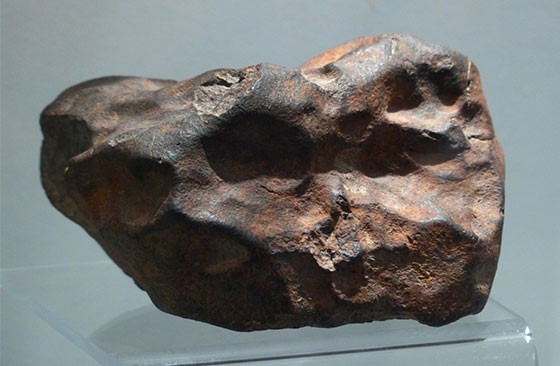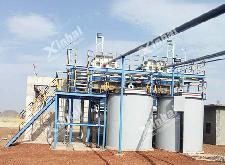

Warm Tip: If you want to know more details about equipment, solutions, etc, please click the button below for free consultation, or leave your requirements!
I am going to show you what are the common nickel mineral processing technologies.
Actually, there are many kinds of nickel ore, which are mainly divided into Cu-Ni sulfide ore and Cu-Ni oxide ore according to mineral properties.
So, Copper is the main impurity mineral in nickel ore, followed by lead, zinc, arsenic, fluorine, manganese, antimony, bismuth and chromium.
In the process of ore dressing, nickel ore is divided into copper sulfide ore dressing method and nickel oxide ore dressing method.
Let's get started.

Copper sulfide nickel ore type is given priority to with magmatic liquation type copper nickel, the nickel content in more than 3% for rich ore, can direct smelting, and nickel content lower than 3%, need to deal with the dressing.
When the content of nickel ore is less than 3%, it is mainly accompanied by a large number of metal minerals and gangue minerals:
the main metal minerals: pyrrhotite, Ni-pyrite and chalcopyrite;
the secondary metal minerals: magnetite, pyrite, ilmenite,chromite, Mercator, copperblue, pyrotite, porphyry and platinum group minerals.
Gangue ore mainly consists of: peridot, pyroxene, plagioclase, talc, serpentine, chlorite, phallus, and mica, some of which also contain quartz and carbonate.
The copper in Cu-Ni sulfide ore mainly exists in the form of chalcopyrite, while the nickel mainly exists in the form of free nickel sulfide such as Ni-pyrite,stigmatite, and Zi-sulfonite.
In addition, most of the nickel occurs inpyrrhotite in the form of a similar image.
Therefore, flotation method is commonly used to concentrate copper and nickel sulfide ore. The methods are as follows:
Directly or part of the preferential flotation is the copper concentrate alone, used in the case of high copper content. The main characteristic of this method is that the copper concentrate with low nickel content can be obtained directly.
Mixed flotation method mainly from mixed flotation of copper and nickel ore, sorting out low nickel content in mixed concentrate of copper concentrate and the copper nickel concentrate.
The obtained copper-nickel concentrate can be directly smelted into high ice nickel and then separated by flotation.
This method is mainly suitable for these paration of copper and nickel ores with low copper content.
In the optimizing flotation method, copper and nickel after mixed flotation, again from mixed flotation tailings of nickel in the recycling process. The mixed optimum flotation method is mainly used under the condition that the floatability of various nickel minerals in ore varies greatly.
Note: there is a basic principle when selecting flotation method for cu-ni sulfide ore, that is, it is better to let copper into the nickel concentrate than to let nickel lose in the process of copper separation, because the loss of nickel in the copper concentrate is relatively large in the process of treatment and smelting, and the copper can still be recovered in the smelting of nickel concentrate.
Most of the nickel oxide ore is in the form of nickel laterite, which contains less silicon and magnesium and contains 1-2% nickel.
Secondly, nickel silicate ore is mainly used, which contains higher silicon magnesium and lower iron, and the content of nickel is 1.6~4%.
At present, the development and utilization of nickel oxide are mainly based on the nickel laterite ore. The main reason is that in the oxidation ore, nickel is often dispersed in gangue minerals with similar quality, and the coarse grains are relatively fine, so it is difficult to directly obtain the nickel concentrate through mechanical dressing.
Therefore, it is necessary to use crushing, screening and other processes to remove the bulk bedrock blocks with weak weathering degree and low nickel content in advance.
Nickel oxide deposits are relatively shallow buried and suitable for large scale openpit mining and selective mining. After mining, nickel oxide is enriched by pyrotechnics and hydrometallurgy.
Fire smelting can be divided into smelting electric furnace smelting, nickel iron method and the grain of iron method.
The rotary kiln pellet iron method is old and complicated, and the content of pellet iron is low, the recovery of nickel is low, so cobalt cannot be recovered. The nickel recovery rate of electric furnace smelting is high, some of which can be drilled into nickel-iron and recovered in the process of refining.
Wet smelting can be divided into reduction roasting of atmospheric ammonia leaching method and high pressure acid leaching method.
At present, both processes have been used in industry.
In addition, there are some new methods, such as high temperature chlorination and sulfuricroasting, which are still in the research stage.
The above is the common method of nickel ore processing. However there is no one same solution for all mine. It is advised to find a professional dressing manufacturers who has the qualification to do dressing test to customize the process flow in line with the actual situation.
Last: What Is the Difference between Gold Flotation and Cyanidation?
1How to Process Kaolin?
 0
0
 3536
3536
2What Are the Common Nickel Mineral Processing Technologies?
 3
3
 4387
4387


What Are the Differences Between CIP and CIL?
 11358
11358
 0
0